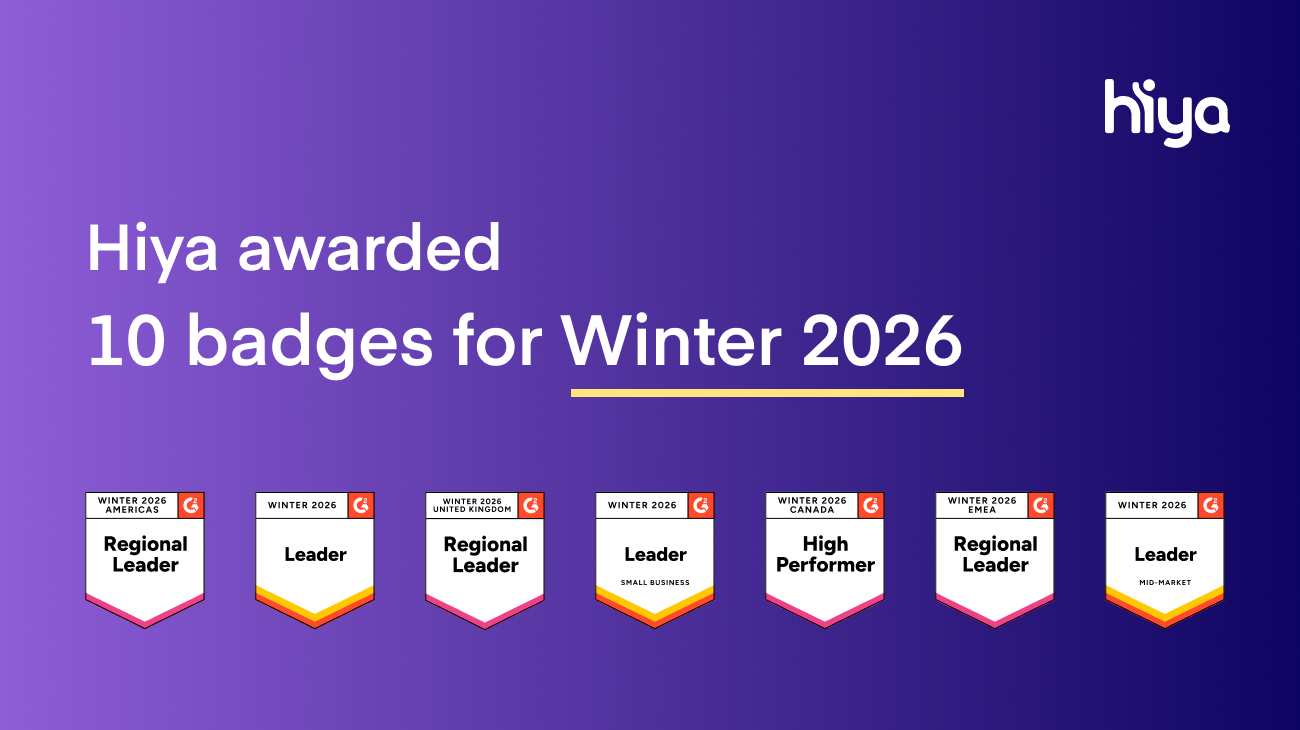%20copy%202.png)
With robocalls becoming more common, it can feel like a day goes by without a call from an unknown number disrupting your routine. And when 87% of consumers are concerned that unidentified calls are fraudulent, reliable communication from businesses is even more difficult. That’s where the robocall mitigation database comes in.
This innovative tool helps with both consumer protection and regulatory compliance. By cataloging numbers associated with malicious or unwanted automated communications, the robocall mitigation database is critical in safeguarding individuals from potential scams and ensuring a more secure telecommunications landscape for all.
What is the robocall mitigation database?
The robocall mitigation database is a system designed to combat the issue of unwanted robocalls. It is an archive of phone numbers identified as sources of illegal or suspicious automated calls. The database is the place where voice service providers cross-reference and block numbers listed as potential threats.
The Federal Communications Commission (FCC) oversees the implementation of the robocall mitigation database in the United States. This regulatory agency ensures that telecommunications carriers adhere to regulatory standards. As service providers actively participate in this initiative, the database is a tool to help providers better mitigate the impact of robocalls.
The importance of robocall mitigation
Robocall mitigation is indispensable for consumers and service providers due to its direct impact on trust and credibility. Consumers face constant disruptions and potential fraud from unwanted automated calls, with one in three expressing suspicion of any calls from a business that has been previously impersonated or spoofed by scammers. Effective mitigation strategies can help shield consumers from scams.
These strategies can also foster trust in phone communications. For service providers, actively engaging in robust robocall mitigation enhances their credibility by demonstrating a commitment to customer security. It safeguards their reputation from association with fraudulent activities and bolsters consumer confidence in the reliability of their services.
The FCC’s role and requirements
The FCC robocall mitigation database outlines specific requirements for service providers to tackle this issue. All voice service providers were mandated to implement the SHAKEN/STIR caller ID authentication framework by June 30, 2021. This requirement was part of the FCC’s strategy to mitigate robocalls, and it requires providers to sign and verify the authenticity of caller ID information digitally.
The STIR/SHAKEN framework can help end-users discern between legitimate and potentially fraudulent calls. The database and FCC requirements are part of a collective effort to enhance the integrity of the telecommunications ecosystem and protect consumers from the onslaught of unwanted automated communications.
Registration and maintenance of robocall mitigation plans
Here is a step-by-step guide for registering with the robocall mitigation database:
-
Understand the Requirements. Familiarize yourself with the FCC’s requirements for authenticating caller ID information.
-
Engage with the Industry. Collaborate with other voice service providers to establish a secure and interoperable framework for call authentication.
-
Implement STIR/SHAKEN. Deploy the necessary technology to implement this framework. You may need to upgrade your infrastructure to support the digital verification of caller ID information.
-
Coordinate with Certification Authorities. Work with certification authorities to obtain the credentials for signing calls and participating in the authentication process.
-
Register with the robocall mitigation database. Follow the procedures provided by the FCC to register your company with the database. Ensure you submit all required information accurately and within the specified timeframe.
Maintaining and updating your robocall mitigation plan involves regular assessments to evaluate the effectiveness of existing measures. Staying informed on FCC guidelines is crucial to ensure ongoing compliance with the latest regulations.
Regular training sessions help employees stay well-informed about the latest robocall threats, as robocallers constantly deploy new techniques. Always refer to the latest FCC guidelines and industry standards for the most accurate and up-to-date information on robocall mitigation.
Consequences of non-compliance
If a company fails to register in the robocall mitigation database within the specified timeframe, it may face increased scrutiny and potential penalties. The FCC has set regulations to combat robocalls, and non-compliance could lead to a degradation of voice traffic for the non-registered entity.
Carriers may implement measures to mitigate the risk of transmitting potentially fraudulent or unwanted calls, which can result in legitimate calls from the non-compliant company being treated with suspicion or even blocked. Beyond the operational impact, there's also a potential harm to the service provider's reputation.
Consumers increasingly value telecom companies that actively contribute to the fight against robocalls. Failing to register risks regulatory repercussions and undermines the service provider's trustworthiness in consumers' eyes.
How Hiya helps
The robocall mitigation database is just one part of stopping unwanted robocalls and ensuring regulatory compliance. By flagging suspicious numbers, it acts as a frontline defense against fraudulent calls and aids in maintaining the integrity of telecommunications. The database also plays a vital role in adherence to regulatory standards, reinforcing trust in the industry and fostering a secure communication environment for users.
With so many consumers receiving unwanted calls like robocalls, a branded call display lets them know the call is legitimate and valuable. 72% say they’re more likely to answer if they know who is calling, which means you can communicate the critical information they need. Check out Hiya’s Calling Best Practices Guide for more tips on facilitating clear communication with your customers.



